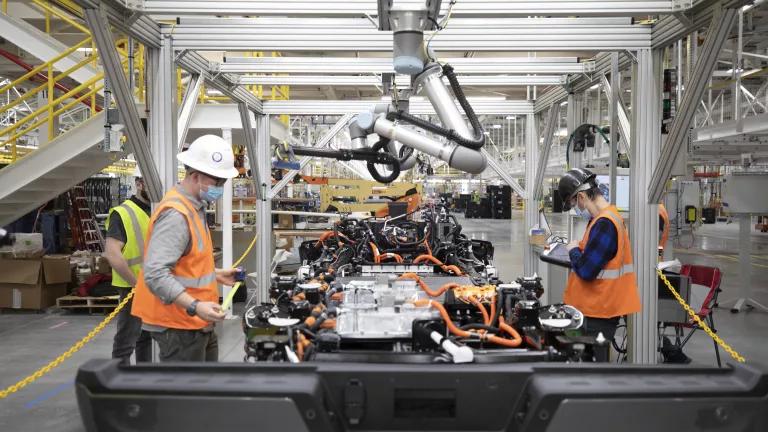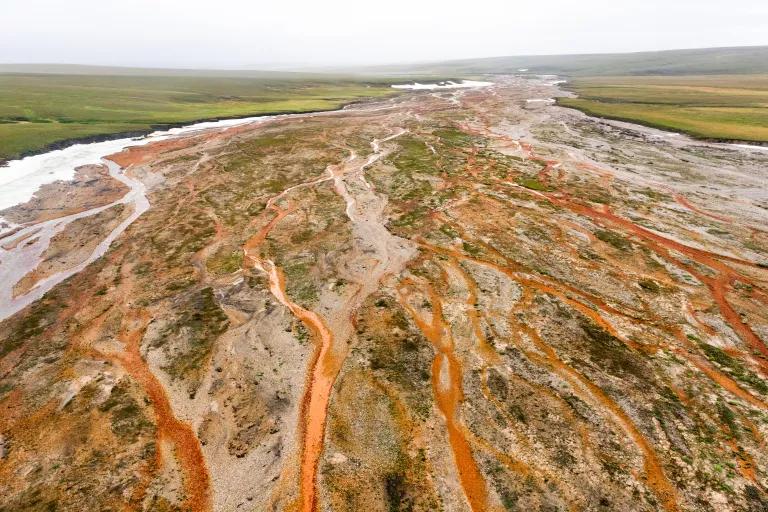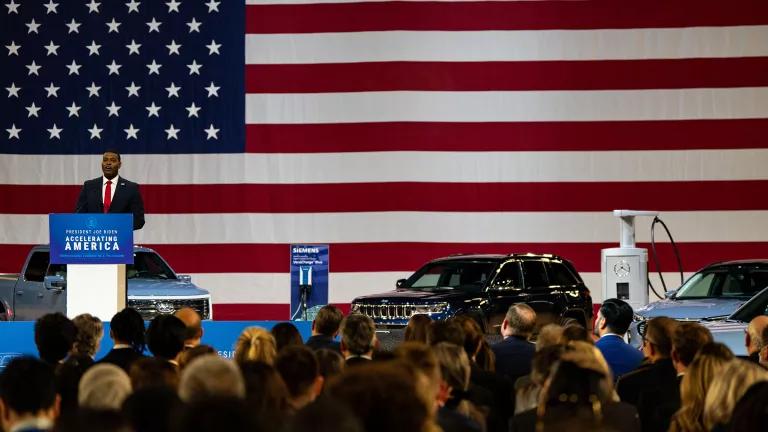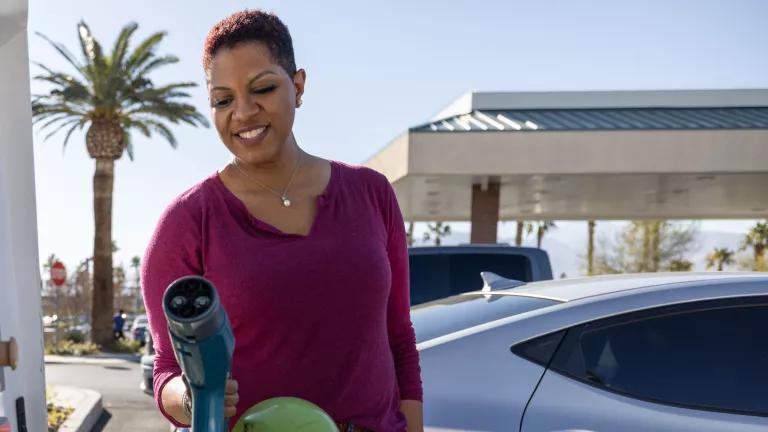Record Year for Electric Vehicle Battery Supply Chains
The building blocks are here, but they need to all be put together.

Worker's inspecting an electric pickup truck in Dearborn, Michigan
This blog is part of NRDC’s Year-End Series Reviewing 2022 Climate & Clean Energy Developments
More than a quarter of a million electric vehicles (EVs) have been sold in the U.S. in 2022 alone. Consumer preferences and policies continue to drive historic demand for clean cars. With demand for EVs comes demand for the batteries that power them. Supply chains for EV batteries are relatively new and rapidly evolving. There is not only a need to reduce risk, but also an opportunity to build supply chains that are circular through recycling, reuse, and reducing waste and toxics. Doing so will limit harms that are pervasive in current fossil fuel vehicle supply chains.
While there is still a lot that needs to be done in 2023 and beyond, there were many actions in 2022 that demonstrated the federal government’s desire to build EV battery supply chains needed to support local, state, and national clean transportation goals. Let’s go through those actions.
2022 Federal Actions to Support EV Battery Supply Chains
Mining Reform
Hardrock mining on public lands is still governed by the 150-year-old Mining Law of 1872, which lacks any sort of protections for public lands, the environment, or local communities and Tribes. In 2022, a group of federal agencies began reviewing outdated laws, seeking feedback from a variety of stakeholders, and recommending a modernized set of mining regulations that will provide improved permitting, robust community and Tribal engagement, and protections for ecosystems, watersheds, and lands.
What’s clear is that we need a permitting system that ensures people have a say in the projects that will define their communities for decades to come. That’s why updating the mining laws are so important, but NRDC has been fighting – and will continue to fight – a proposal in Congress to gut environmental reviews.
Mineral Mining and Refining
Even though mining is a huge industry in the U.S., our nation relies on other countries for a large portion of the five minerals needed for today’s EV batteries: lithium, nickel, cobalt, graphite, and manganese. And, there are only a handful of operational mineral processing plants in the U.S. that can take raw materials refine them enough to be used in batteries. Many programs announced this year seek to support a secure supply of refined minerals necessary for the energy transition. Funded projects include using new technology to map mineral resources, expanding mineral processing facilities, and forming global partnerships for diversifying resources and expanding supply chain infrastructure. However, these programs have yet to, but must, prioritize projects that reduce demand for newly mined minerals through materials recycling, reuse, and substitution. The programs need to also institute strong cultural, environmental, and due diligence standards as NRDC along with a coalition of conservation, human rights, Indigenous, and justice-focused organizations called for in their letter to President Biden.

The braided channels of a river rich in minerals
Battery Production and Manufacturing Jobs
The pressure was on this year to improve U.S. battery manufacturing competitiveness in the global market and ensure good-paying, union jobs. The U.S. took a major step when President Biden signed the strongest ever U.S. climate law – the Inflation Reduction Act (IRA) – which will provide billions of dollars of credits for renewable energy, clean transportation, and climate justice while creating good-paying jobs, promoting innovation, and bolstering domestic manufacturing. NRDC has dedicated years of work to make this historic climate law a reality and has continued to make sure funding flows towards projects that most serve climate and equity priorities. IRA will provide consumer credits for EVs that meet battery mineral sourcing and manufacturing criteria as well as credits to support expansion of facilities so domestic sources can keep up with demand. Knowing that new domestic facilities will need skilled employees, the U.S. Department of Labor is working with other groups to develop and fund workforce training programs for automotive workers.
Reduce, Reuse, Recycle
Reusing and recycling old batteries can reduce the need for newly mined materials. This year, the Federal government awarded funding from the Bipartisan Infrastructure Law (BIL) to research projects advancing efficient recycling methods and second-life uses for EV batteries that have been retired from their original vehicle but still have plenty of capacity left for an alternate energy storage application. A few facilities also received funding to scale up manufacturing battery materials and components made from recycled batteries and materials extracted from waste from old mines. Finally, many of the credits in IRA also incentivize and can support EV battery recycling – however, it is not a guarantee. NRDC has joined other environmental organizations in advocating for more funding for recycling and reuse and for IRA implementation to prioritize robust and broad public engagement, clarity and certainty, and sound stewardship.
The building blocks are here, but they need to all be put together
The Federal government has taken many important steps towards improving and securing supply chains for the materials we will need to accelerate our clean energy transition. While this initial ramp up in materials, processing, and manufacturing takes place, it is equally critical that plans and expenditures are made today to establish a circular battery supply chain that limits harms and is ready to go as the first generations of EVs reach the end of their useful lives.
We must ensure that implementation of these programs actively works towards reversing the impacts of disproportionate pollution harms on Indigenous, low-income, and black peoples and people of color by requiring that all projects receiving federal funding engage with these communities early and often and practice Free, Prior, and Informed Consent. As my colleagues have called for, mining reform that effectively includes frontline communities and improves environmental performance standards must be a priority as programs incentivize domestic production of battery minerals and components.
In order to realize the historic battery supply chain actions of 2022, federal agencies must engage with and listen to all affected, especially the most impacted communities, to ensure that funding is used in the most efficient manner to support pollution reduction, electrification, and a robust, sustainable circular economy.




